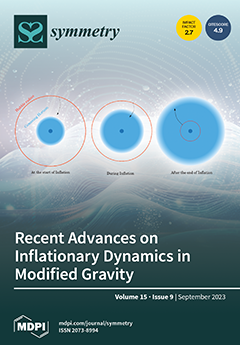Dynamical chiral symmetry breaking (D
SB) in quantum chromo dynamics (QCD) for light quarks is an indispensable concept for understanding hadron physics, i.e., the spectrum and the structure of hadrons. In functional approaches to QCD, the respective role of the quark propagator
[...] Read more.
Dynamical chiral symmetry breaking (D
SB) in quantum chromo dynamics (QCD) for light quarks is an indispensable concept for understanding hadron physics, i.e., the spectrum and the structure of hadrons. In functional approaches to QCD, the respective role of the quark propagator has been evident since the seminal work of Nambu and Jona-Lasinio has been recast in terms of QCD. It not only highlights one of the most important aspects of D
SB, the dynamical generation of constituent quark masses, but also makes plausible that D
SB is a robustly occurring phenomenon in QCD. The latter impression, however, changes when higher
n-point functions are taken into account. In particular, the quark–gluon vertex, i.e., the most elementary
n-point function describing the full, non-perturbative quark–gluon interaction, plays a dichotomous role: It is subject to D
SB as signalled by its scalar and tensor components but it is also a driver of D
SB due to the infrared enhancement of most of its components. Herein, the relevant self-consistent mechanism is elucidated. It is pointed out that recently obtained results imply that, at least in the covariant gauge, D
SB in QCD is located close to the critical point and is thus a delicate effect. In addition, requiring a precise determination of QCD’s three-point functions, D
SB is established, in particular in view of earlier studies, by an intricate interplay of the self-consistently determined magnitude and momentum dependence of various tensorial components of the gluon–gluon and the quark–gluon interactions.
Full article





